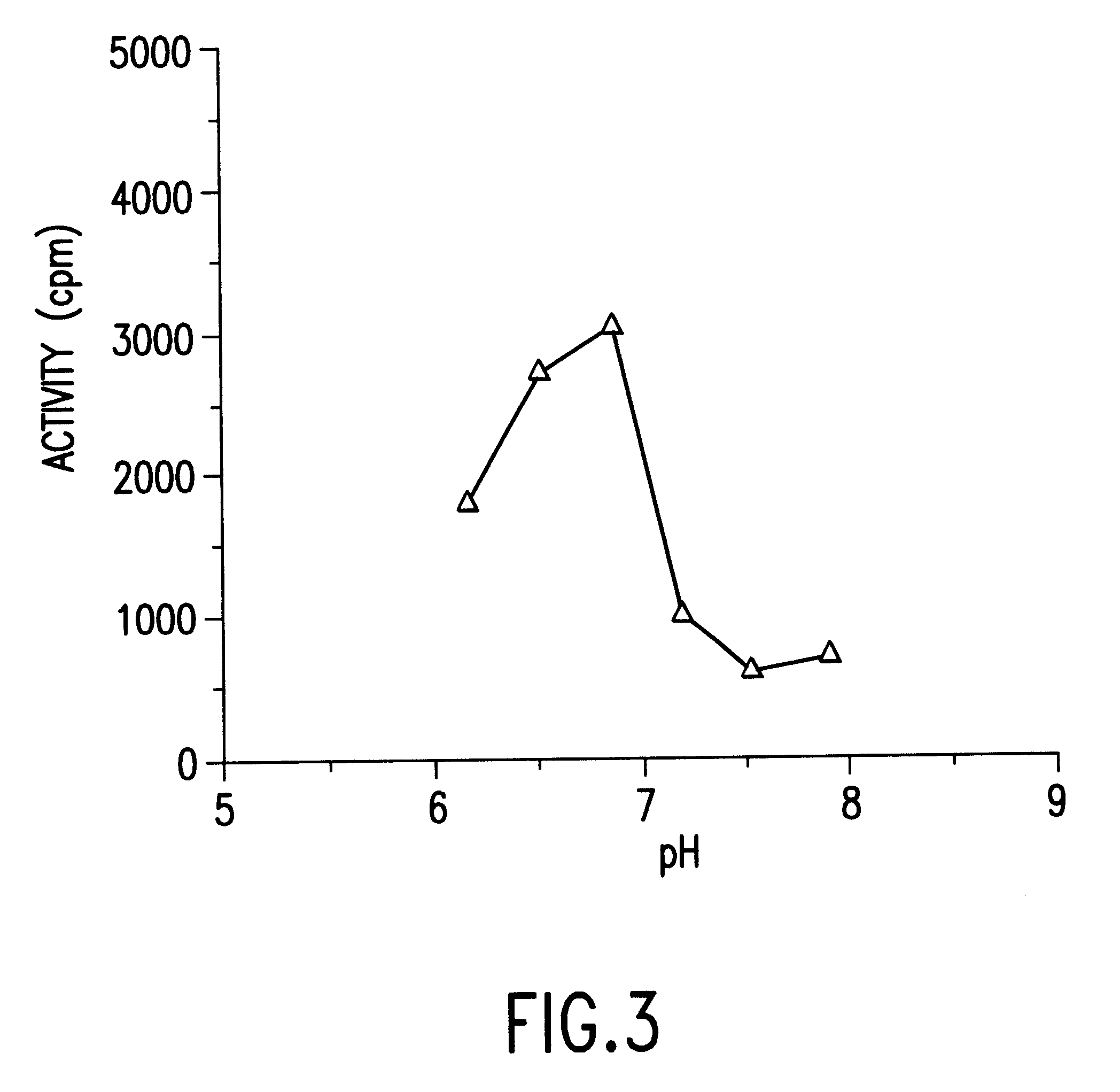DNA polymerase
a dna polymerase and primer technology, applied in the field of dna polymerase, can solve the problems of poor primer extension activity of existing dna polymerases possessing excellent proofreading functions
- Summary
- Abstract
- Description
- Claims
- Application Information
AI Technical Summary
Benefits of technology
Problems solved by technology
Method used
Image
Examples
example 2
Determination of Base Sequence of DNA Fragment Containing Novel DNA Polymerase Gene
The above XbaI-XbaI fragment, containing the DNA polymerase gene, was again cut out from the plasmid pFU1001 obtained in Example 1 with XbaI, and blunt-ended using a DNA blunting kit (manufactured by Takara Shuzo Co., Ltd.). The resultant was then ligated to the new pTV118N vector, previously linearized with SmaI, in different orientations to yield plasmids for preparing deletion mutants. The resulting plasmids were named as pFU1002 and pFU1003, respectively. Deletion mutants were sequentially prepared from both ends of the DNA insert using these plasmids. The Kilo-Sequence deletion kit (manufactured by Takara Shuzo Co., Ltd.) applying Henikoff's method (Gene, 28, 351-359) was used for the above preparation. The 3'-overhanging type and 5'-overhanging type restriction endonucleases used were PstI and XbaI, respectively. The base sequence of the insert was determined by the dideoxy method using the BcaB...
example 3
Preparation of Purified DNA Polymerase Standard Preparation
The Escherichia coli JM109 / pFU1001 obtained in Example 1 was cultured in 500 ml of an LB medium (10 g / l trypton, 5 g / l yeast extract, 5 g / l NaCl, pH 7.2) containing ampicillin at a concentration of 100 .mu.g / ml. When the culture broth turbidity reached 0.6 in A.sub.600, an inducer, isopropyl-.beta.-D-thiogalactoside (IPTG) was added and cultured for 16 hours. After harvesting, the harvested cells were suspended in 37 ml of a sonication buffer [50 mM Tris-HCl, pH 8.0, 0.2 mM 2-mercaptoethanol, 10% glycerol, 2.4 mM PMSF (phenylmethanesulfonyl fluoride)] and applied to an ultrasonic disrupter. Forty-two milliliters of a crude extract was recovered as a supernatant by centrifugation at 12,000 rpm for 10 minutes, which was then heat-treated at 80.degree. C. for 15 minutes. Centrifugation was again carried out at 12,000 rpm for 10 minutes to yield 33 ml of a heat-treated enzyme solution. The above solution was then dialyzed with 8...
example 4
(1) Biochemical Properties of DNA Polymerase
For a DNA polymerase preparation forming a complex of the translation products of ORF3 and ORF4 obtained in Example 3, namely the first DNA polymerase-constituting protein and the second DNA polymerase-constituting protein in a ratio at 1:1, optimum MgCl.sub.2 and KCl concentrations were firstly assayed. The DNA polymerase activity was assayed in a reaction system containing 20 mM Tris-HCl, pH 7.7, 2 mM 2-mercaptoethanol, 0.2 mg / ml activated DNA, and 40 .mu.M each of dATP, dGTP, dCTP and dTTP in the presence of 2 mM MgCl.sub.2, while the KCl concentration was step by step increased from 0 to 200 mM KCl for each 20 mM increment. As a result, the maximum activity was exhibited at a KCl concentration of 60 mM. Next, the DNA polymerase activity was assayed in the same reaction system but in the presence of 60 mM KCl in this time, while the MgCl.sub.2 concentration was step by step increased from 0.5 to 25 mM MgCl.sub.2 for each 2.5 mM incremen...
PUM
| Property | Measurement | Unit |
|---|---|---|
| Fraction | aaaaa | aaaaa |
| Fraction | aaaaa | aaaaa |
| Time | aaaaa | aaaaa |
Abstract
Description
Claims
Application Information
 Login to View More
Login to View More - R&D
- Intellectual Property
- Life Sciences
- Materials
- Tech Scout
- Unparalleled Data Quality
- Higher Quality Content
- 60% Fewer Hallucinations
Browse by: Latest US Patents, China's latest patents, Technical Efficacy Thesaurus, Application Domain, Technology Topic, Popular Technical Reports.
© 2025 PatSnap. All rights reserved.Legal|Privacy policy|Modern Slavery Act Transparency Statement|Sitemap|About US| Contact US: help@patsnap.com



